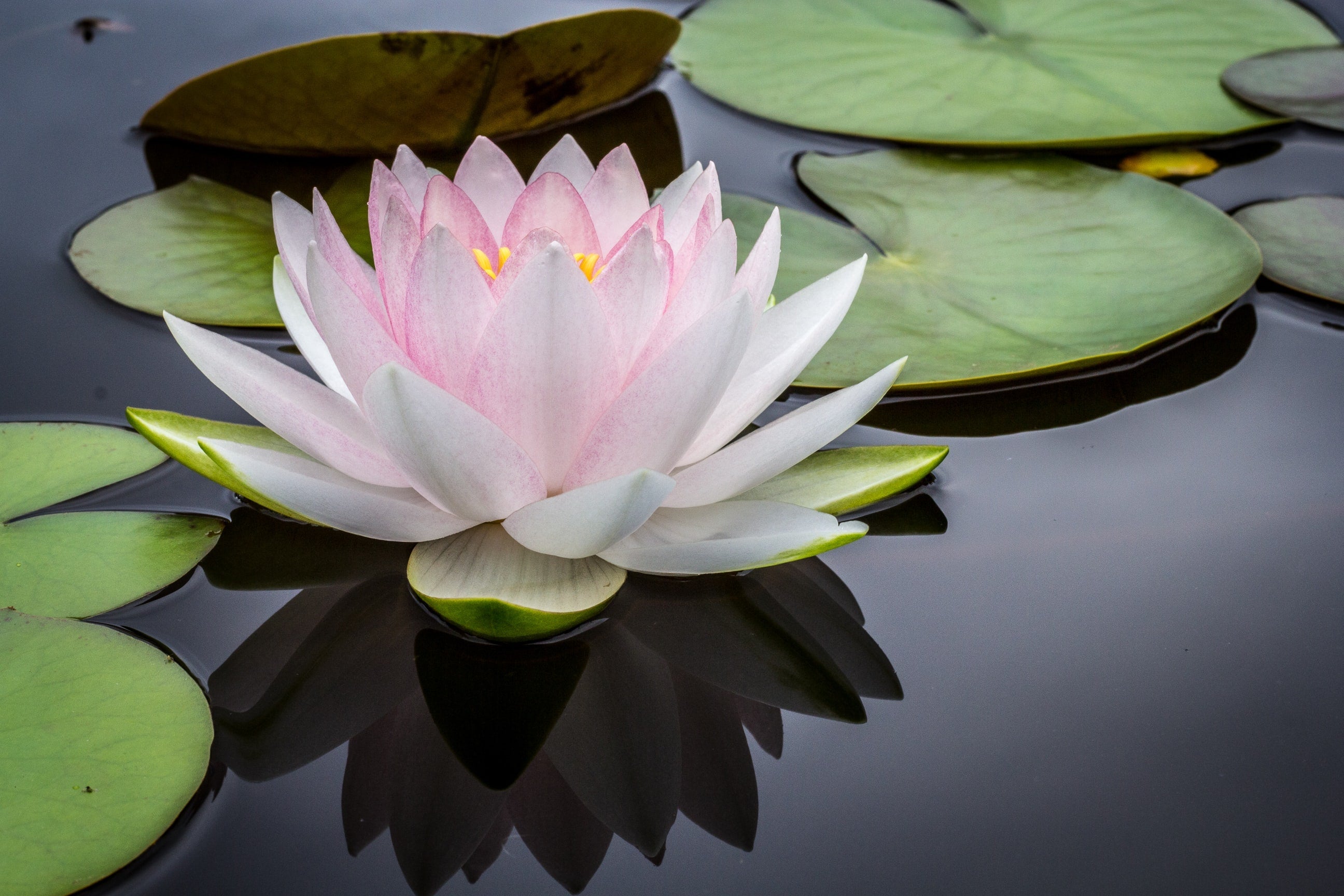Deep water plants grow under the waterline in a pond. They are usually completely submerged but may have flowers or fronds that project out of the water.
Deep water plants provide value to pond owners with deep enough ponds as they can add shelter to fish, add oxygen, remove nitrates and provide visual interest.
While not essential in a pond, they do add character.
If you have a deep pond and are looking for deep water plants to help fill it, you’re in the right place!
What are deep water plants?
As we mentioned in the introduction, deep water plants grow under the waterline in a pond and are usually submerged.
A water lily is a prime example of a deep water plant. The main plant is submerged in the water while the leaf and flower sit on top.
It adds shade to fish underneath and provides a habitat for insects and other pond life.
Plants also emit oxygen as part of their natural processes, while also ingesting nitrogen from within the water.
Use the right deep water plant in the right places and you can create a harmonious natural balance within a pond.
Deep water plants for ponds
Consider some of the following plant types for your pond.
Water Lilies (Nymphaeaceae nymphaea)
Water lilies are usually the first deep water plant that enters the mind when thinking of ponds.
They are immensely popular for good reason. They are very hardy, can grow in water up to 10 feet deep, provide excellent cover and look lovely.
Hornwort (Anthocerotopsida)
Hornwort is a fern-like deep water plant almost as popular as lilies. They are hardy and don’t need substrate to flourish as they take nutrients from the water rather than soil.
Hornwort are oxygenators and can cope with shade, making them an ideal plant alongside others to maintain a balanced pond.
Brandy Bottle (Nuphar lutea)
Brandy Bottles are also useful deep water plants for larger ponds. This plant grows quickly and may smother smaller ponds, so use carefully.
It is great for the water and can cope with partial shade. It absorbs lots of nutrients too, which helps maintain water balance.
Floating Heart (Nymphoides peltata)
Floating Heart, also known as Water Fringe, looks like a small water lily but is not related.
It has a star shaped flower in summer and can cope with partial shade. This plant can also cope with shallower depths, so may be useful for shallow ponds or shelves.
Amphibious Bistort (Persicaria amphibia)
Amphibious Bistort is an attractive deep water plant that can cope with up to 8 feet of water.
It has a pretty purple flower and simple leaves that protrude above the water that are nice to look at in summer. The flower is a beacon for insects so could be ideal for building an ecosystem.
Golden Club (Orontium aquaticum)
Golden Club is a set and forget pond plant. It’s incredibly low maintenance and delights with intriguing yellow flowers in summer.
It copes with shallower waters and partial shade and limits its own spread, which is why it’s low maintenance.
Broad-leaved Pondweed (Potamogeton natans)
Broad-leaved Pondweed is useful in ponds, despite the name. It’s a broadleaf plant that roots at the base of the pond and grows shoots to the surface where it spawns leaves.
Those leaves provide excellent shade and oxygen for the plant while also providing landing spots for insects.
Sacred Water Lotus (Nelumbo nucifera)
Sacred Water Lotus is an attractive deep water plant for ponds with a lovely fragrant flower.
It grows well at various depths but needs a substrate to root. Depending on where you live, Sacred Water Lotus is regarded as an invasive species, so check before you buy!
Water Hawthorn (Aponogeton distachyos)
Water Hawthorn is an excellent deep water plant and is almost as popular as the water lily.
It’s hardy, can cope with varying depths of water and can flower all year round within temperature extremes. Its flowers also smell of vanilla, which is one of the reasons it’s so popular.
Cattail (Typhaceae typha)
Cattail is a deep water marginal plant that can grow well in deep water. Plant them in pots to minimise spread.
The Cattail is an attractive grass that provides a habitat for insects and adds interest to a pond. Choose the species carefully, as some regions regard it as invasive.
Watercress (Nasturtium aquaticum)
Watercress is another attractive deep water plant with lovely white flowers. It works well in deeper water.
Watercress is great for absorbing nitrates from the water and providing oxygen as a result, which is why they are so popular.
Starwort (Callitriche stagnalis)
Starwort is a green plant with star shaped leaves. It is popular because it is active all year round, providing essential oxygen during autumn and winter.
Starwort flowers well and can cope with full sun or partial shade. It also provides cover for fish and a platform for pond life.
Those are 12 viable deep water plants for your pond. Each has a unique look and feel and offers a range of benefits to ponds.
Choose one, choose them all, but monitor their progress to make sure they fit in the unique environment of your pond.

